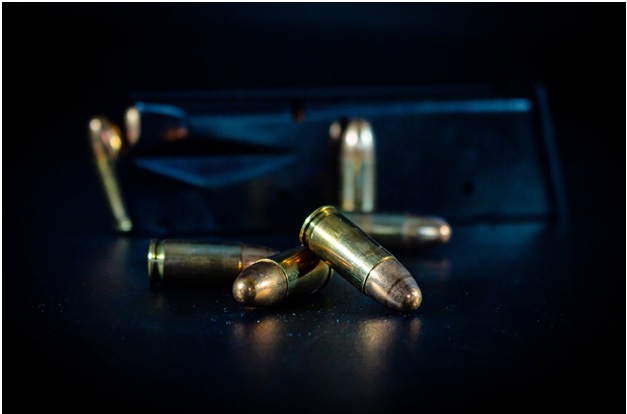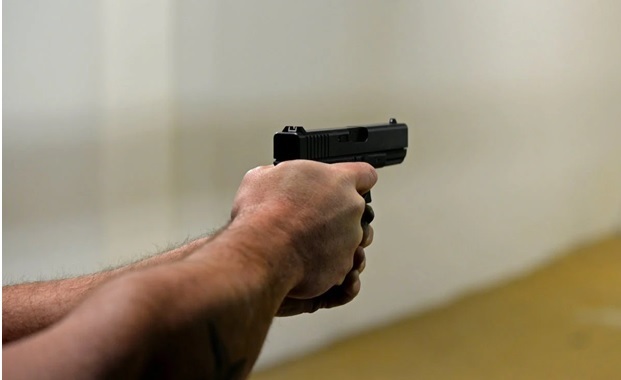5 Pistol Mag Issues and How to Fix Them
Apr 1st 2023
You might be surprised how many issues mag-fed pistols have that actually have to do with the mag itself.
For a pistol mag to feed smoothly, it has to be seated properly, clean, well-kept, and free of damage or deformation. It also needs to have a strong mag spring that hasn’t been worn out and fatigued.
Surprisingly, some gun owners just don’t take care of their mags. Everyone knows you need to clean your bore of powder and copper fouling, and keep your action and bolt face clean so the gun will feed, fire, and extract.
But for whatever reason, magazine maintenance just doesn’t take precedence with some gun owners.
We don’t know why but we’re also not here to ask. What we can do is offer some helpful advice for troubleshooting pistol mag issues, as well as how you might go about fixing some of them.
Mag Won’t Seat (Mag Catch Won’t Engage Magazine)
This problem - if it is the problem indeed - may not be caused by a magazine failure. For instance, some firearms are designed to have the magazine inserted with the slide or bolt locked open.
In these situations, if you try to smash the magazine into the mag chute with the slide or bolt closed, you will have to force the cartridges up against the closed inside of the action. This can make it impossible to properly seat the magazine.
Before assuming it is a mag issue, simply open the action all the way, then insert the mag. If you get it to catch, that was your problem.
Improper dimensions can also prevent a magazine from seating properly, and thereby, from engaging the mag catch. This is not necessarily due to manufacturer defect, though.
For instance, if the mag’s feed lips are worn or deformed, they may make it impossible for you to properly seat the mag. Deformations of the mag body can also impact mag dimensions making it impossible to seat it.
If these problems are occurring, you will either need to try to “bend” the mag back into shape or get a new one.
Mag Release Will Not Drop Mag

If your pistol mag will not drop free when you hit the mag release, there could be a few things at play here.
One is that, if the pistol mag (or the pistol) is very new, the problem could actually be that the mag catch may be poorly adjusted with respect to the mag release button. Practice inserting and pulling an empty mag free a few times and it should break in and limber up.
The other could be that the gun is very dirty. A lot of fouling around the mag catch and release can make it a little bit sticky. So can a lot of fouling or grime on the outside of the mag body.
You can also try filing the shelf that engages the mag catch on the magazine itself to make sure it is short enough to “release” when you hit the mag release.
Just be cautious about making this adjustment to the mag because once to do change the exterior dimensions of the mag, the change is permanent.
Mag Will Not Feed (Feed Lips Damaged/Deformed)
The final three pistol magazine failures will deal expressly with failures to feed. The first one we will look at is a failure to feed due to damage to the magazine feed lips.
Your pistol mag’s feed lips are small, thin pieces of metal that extend up over the sides of the mag body. If they are dented, bent, or worn, they can cause rough feeding or outright failure to feed.
If the magazine is new, the problem may be that the inside of the mag’s steel or aluminum feed lips is very rough. To fix this issue, get some 400 or 600-grit sandpaper and lightly smooth the inside of the feed lips.
Protecting your mag’s feed lips is one of the best reasons you should keep a speed loader in your range bag and use it. Speed loaders can both unload and load magazines (easily) and prevent damage to the feed lips while doing so.
Mag Will Not Feed (Follower Damaged or Not Seated Properly)
For magazines with a plastic follower, excessive pressure or stress can cause the follower to sheer or deform. Deformed or damaged followers will not feed smoothly.
Magazines with both metal and plastic followers can experience feeding issues if the follower is not seated properly on the mag spring.
When loading your gun’s magazines, be sure you are properly seating the cartridges on the follower to ensure smooth feeding. Also, if it is not feeding well, strip out all the rounds in the mag to ensure it is properly seated.
Mag Will Not Feed (Mag Spring Worn Out)
Last but not least we have what is probably one of the most common firearm magazine issues of all: fatigued magazine springs.
Without a quality mag spring, no box mag is going to feed. But, before you ditch the mag entirely or get a new spring, drop the floor plate, remove the spring, and give it a thorough cleaning.
Excess fouling can make it seem like a handgun magazine’s spring is fatigued but in reality, the thing might just need a good cleaning to bring it back to life.
Too Far Gone? Look Through Our Pistol Magazines for Sale

Not confident that you’ll be able to bring your pistol mags back to life, even with the advice contained in this article?
That’s alright, because from time to time the only reasonable maintenance to administer is replacement, anyway. Pistol mags, like firing pins, barrels, and recoil springs, just don’t last forever.
If you’re looking for a new mag, check out our pistol magazines for sale via the previous link. We carry a wide range of pistol mags (both single and double-stack models) from various manufacturers. We’ve also produced some of our own (like our 1911 mags).
Check them out via the previous links and get in touch with us at 610-250-3960 if you have any questions.

